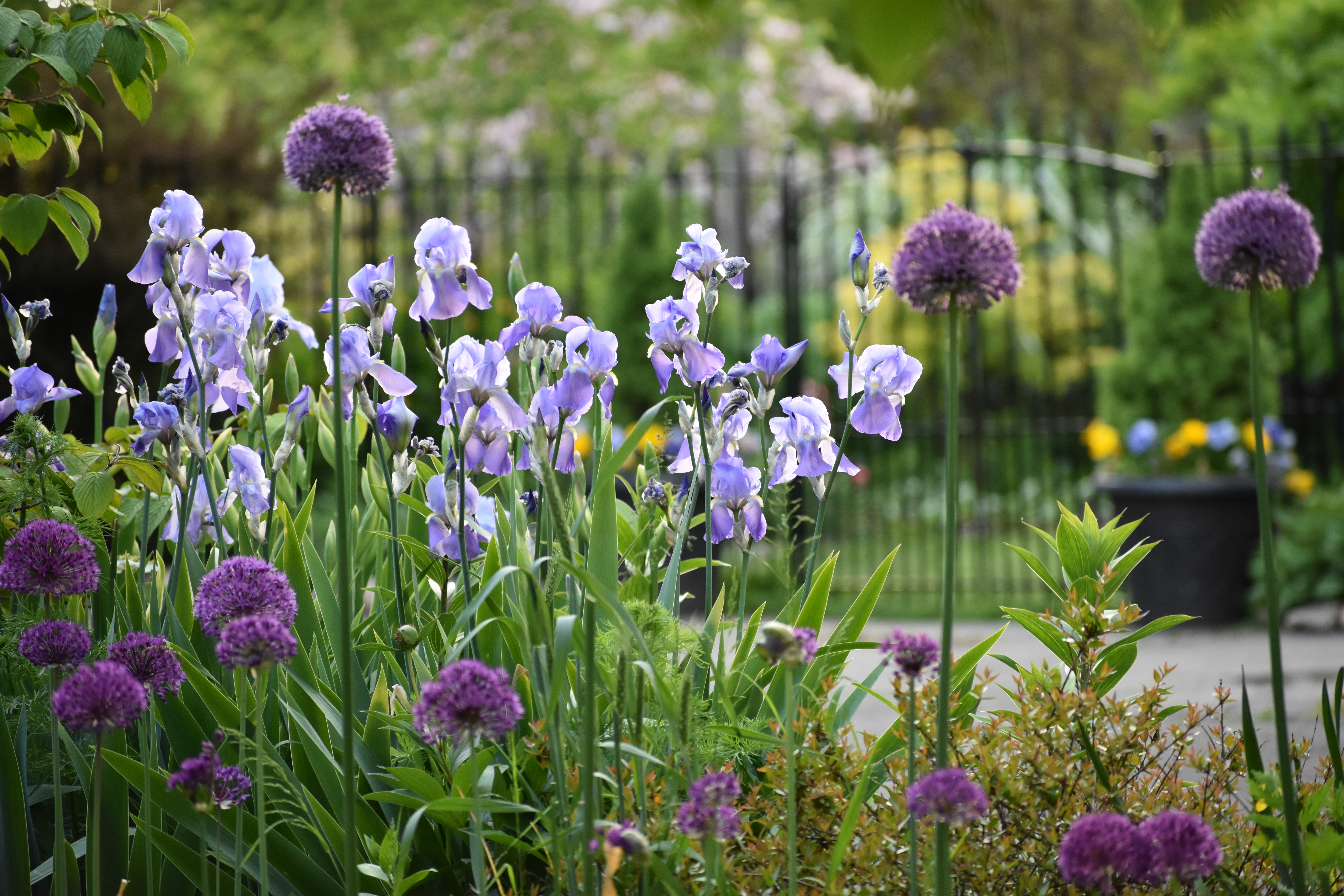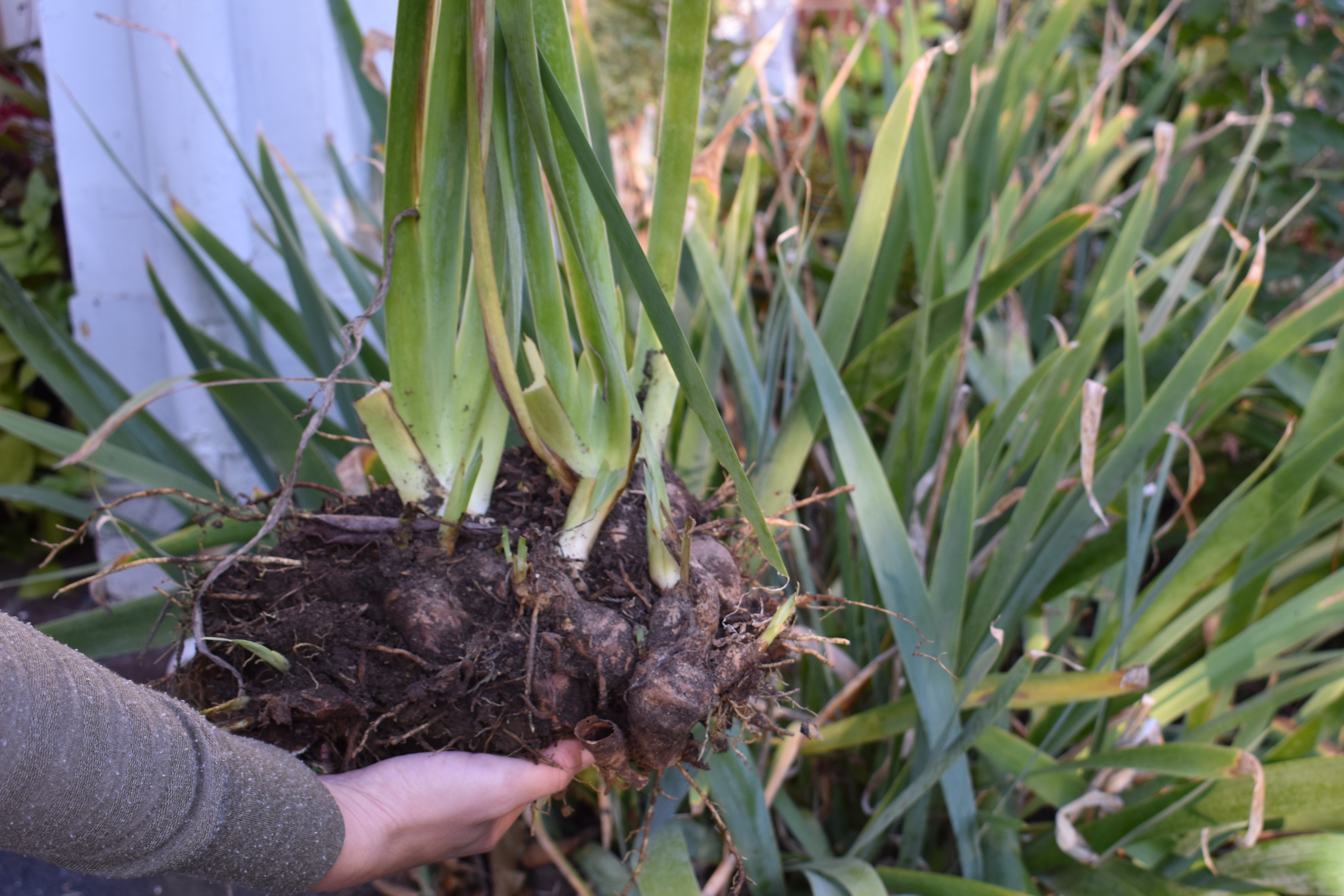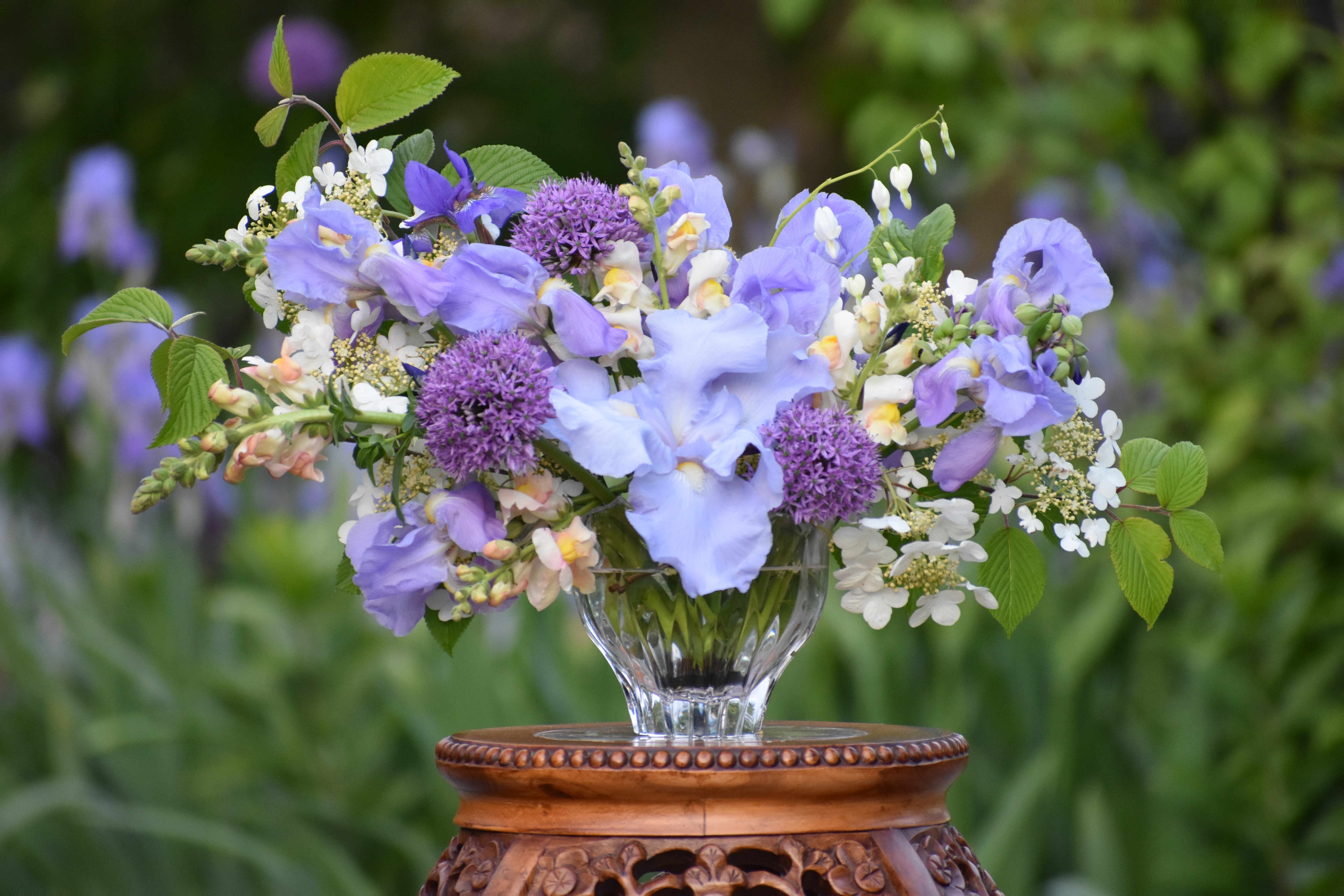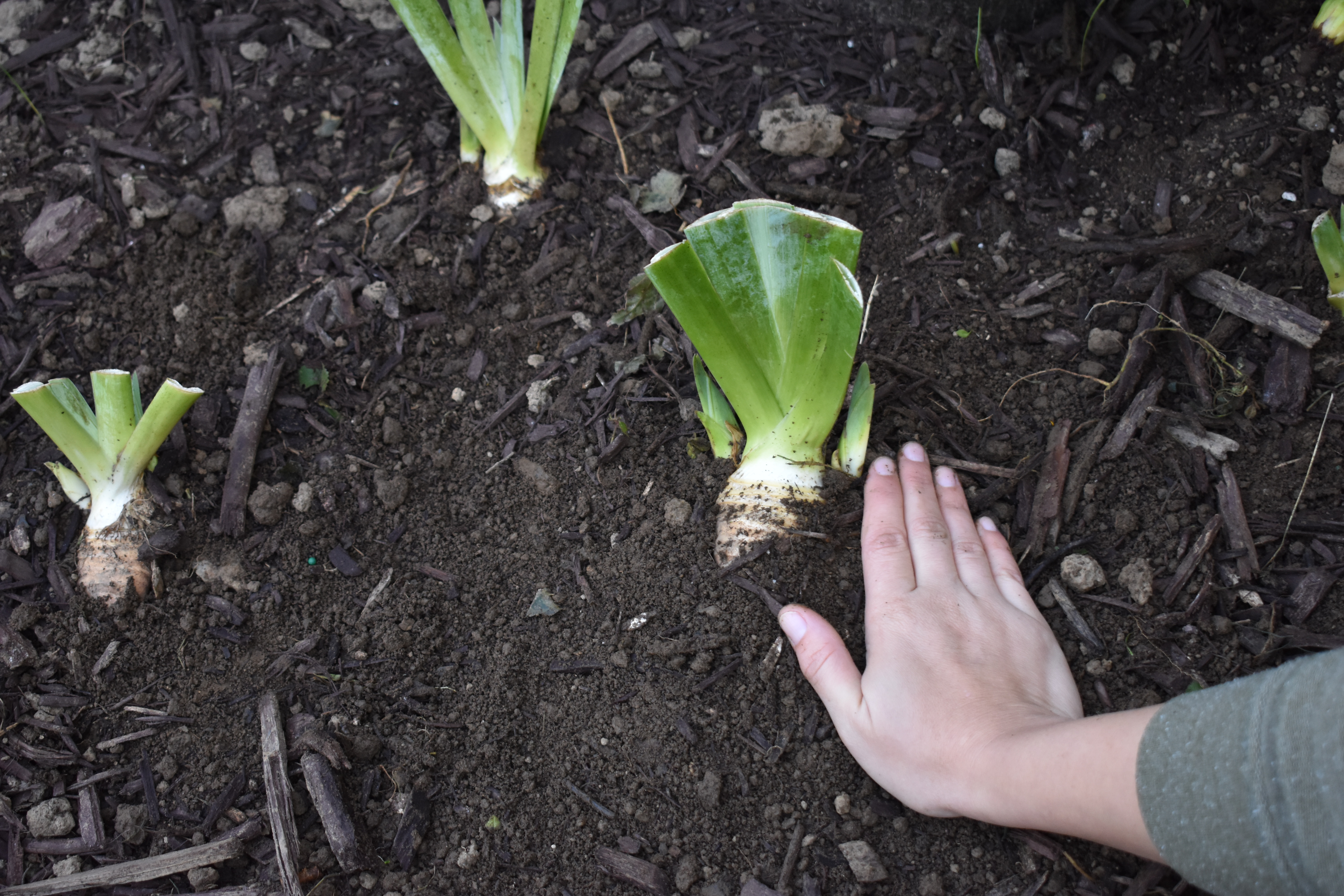Your Guide to Planning, Planting and Growing Iris
Bearded irises are among the most beautiful flowers a gardener can grow. Their late spring and early summer blooms are elegant and regal, their sweet fragrance is reminiscent of grape soda or root beer, and their ability to multiply rapidly has made them the ultimate “pass-along” plant.
Ask a gardener where they acquired their lovely irises and you may hear tales of grandma’s colorful cottage garden, a neighbors who shared handfuls of rhizomes over the garden gate, or a prized collection dug up and moved from a past home. Read on to learn about growing these beautiful, easy-care perennials.

Plan for Success
Bearded iris (sometimes known as German iris) grow from shallow, fleshy roots called rhizomes. Their distinctive flowers have upright petals called "standards" and cascading petals called "falls". Running down the center of each fall is a “beard” that resembles a furry caterpillar. The leaves of bearded iris are flattened and sword-like, and the plants grow to varying heights. Dwarf varieties may stand just a few inches tall, while tall varieties can reach 3 feet or more.
Sun or Shade: Iris flower best in full sun and require a minimum of 6 hours of sun to produce a good show of flowers.
Zone: Bearded iris are winter hardy in zones 3-9. Find your hardiness zone HERE.
Soil: Bearded iris prefer growing in neutral to slightly acidic soil that is loose and well-drained. Planting them in heavy, poorly drained soil can invite a number of disease problems.
When to Plant: The best time to plant bearded iris rhizomes is late summer or early fall when the plants are dormant. New plants should have at least 6 weeks to develop a strong root system before the first hard frost. Container-grown iris may be planted any time during the growing season.

Where to Plant Bearded Iris
Perennial Gardens Bearded iris are classic plants for perennial gardens. They bloom in early summer at the same time as roses, peonies, poppies, lupines and dianthus. Even when the plants are not in bloom, the upright foliage adds a strong vertical accent. Just be careful not to crowd the plants as this can deprive them of sunlight and keep the soil too moist.
Rock Gardens and Dry Areas Bearded iris need moisture in the spring, but once they finish flowering, the plants should be kept as dry as possible. Coarse, fast-draining soil is ideal for bearded iris. Consider planting them at the edge of a sidewalk or in a poor, gravely area.
Cutting Gardens Bearded iris are outstanding cut flowers. The blossoms last for only a day or two, but each stem has multiple buds and will provide at least a week of flowers.
How to Plant Bearded Iris
Iris rhizomes should be planted so they are at or just slightly below the soil surface. After planting, the very top of the rhizome should still be visible. Planting too deeply can cause the rhizomes to rot and will reduce flower production.
Begin by loosening the soil 12” deep. Mix in several handfuls of compost and some all-purpose granular fertilizer (follow package directions). Rhizomes should be spaced 12-24” apart. The tighter the spacing, the sooner the plants will grow together and need to be divided. If you want your new iris bed to look abundant right from the start, plant the rhizomes just 12” apart. If you want to divide less often, use the wider spacing.
For each plant, dig a shallow hole and slightly mound the soil in the center. Position the rhizome on top of the soil mound and spread out the roots on either side. Firm the soil around the roots, remembering to leave the top of the rhizome slightly exposed. In very hot climates, it’s OK to cover the rhizome with up to 1 inch of soil to protect it from extreme heat. Water as needed to settle the roots. Newly planted bearded iris should receive a consistent supply of moisture until they are well established. This may take a month or more. Once the weather turns cold, keep the soil as dry as possible. Bearded iris should not be mulched, but it is important to keep the area free of weeds.

Tips for Growing Bearded Iris
Moisture. Bearded iris should get a consistent supply of moisture from early spring until they finish flowering. From midsummer through fall and winter, the soil should stay relatively dry. Take note of this if you have an irrigation system. Too much moisture is at the root of most disease and pest problems. It is also important to avoid crowding the plants. Make sure there is good air circulation around the foliage.
Fertilizer. Iris begin active growth in very early spring. This is the ideal time to apply a granular all-purpose fertilizer. You may also distribute a shovelful of compost around the rhizomes, making sure not to cover them completely.
Dividing. Bearded iris should be divided every 3-5 years to maintain good health and abundant flowering. The best time to do this is mid-summer, about a month after the flowers have finished blooming. Use scissors to cut the foliage back to one-third its original height. Dig out the clumps and put them on a tarp. Gently separate healthy new rhizomes from the older, less-productive rhizomes that are located toward the center of the clump. Discard any rhizomes with holes (from insect damage, see Iris Borer, below) or soft spots. When dividing large rhizomes, make sure each section has at least one set of 3 to 4 leaves. Replant only the healthiest, most vigorous groups of rhizomes, allowing about 10-12" of space between the clumps.
Iris Borer. In the eastern US, the iris borer attacks all types of iris. Though this pest may not kill the plant, it can cause streaked or spotted leaves and make the rhizomes mushy. The borer is a pinkish caterpillar that burrows into the leaves and then starts moving down into the root zone. As the caterpillars feed on the rhizomes, the plants are exposed to a host of diseases including bacterial soft rot and leaf spot. To avoid iris borer, trim back all foliage in the fall after the first heavy frost. Destroying the foliage will eliminate many of next year’s eggs. When dividing plants, examine the rhizomes for signs of iris borer damage and discard any affected parts.

Enjoy a Lifetime of Beautiful Blooms
It’s easy to see why bearded irises are considered the ultimate “pass-along” plants. Their ability to multiply and thrive for generations is truly unmatched. Bearded irises give us elegant blooms, rich fragrance, and timeless beauty. They also give us stories to treasure among family, friends, and neighbors. Shop for bearded iris HERE and learn more about growing them HERE.
To learn more about gardening with perennials, you may be interested in reading: How to Select Perennials for All Season Color, 10 Easy Perennials for Sunny Gardens, and How to Design a Fragrant Garden.


